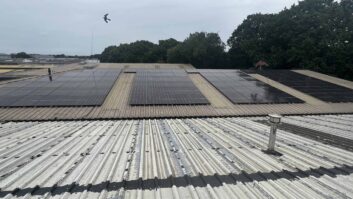Netflix has revealed details about its sustainability achievements across production, content distribution network, and internet transmission during 2022 as part of its fourth Environmental, Social and Corporate Governance Report.
The company has committed to halving its emissions by 2030, which it said it will do by optimising energy use, then electrifying it and decarbonising the rest.
It also wants to bring its remaining net emissions from 2022 onwards to zero, in support of global net zero goals, by investing in nature-based solutions that retain and capture carbon, said Netflix.
During 2022, Netflix’s Scope 1 and 2 emissions were 12 per cent lower year-on-year, says the report, though they remain slightly higher than its 2019 baseline year due to growth in the business.
The vast majority of the emission reductions still come from renewable energy and renewable fuels, said Netflix. “Transitioning from diesel to electric will take time to scale to a level that will have a measurable impact on emissions reductions,” it added.
Production-related emissions account for 60 per cent of Netflix’s overall footprint, the report reveals. To combat this, the company said it is focusing on using clean mobile power equipment versus diesel generators; and using EVs and other low emissions vehicles. Over the course of 2022, Netflix said it implemented these clean technologies on over 60 per cent of the productions it manages.
In the past year, over 50 per cent of the productions Netflix manages incorporated clean mobile power solutions including grid tie-ins, mobile batteries, battery-hybrid generators, and hydrogen power units, revealed the report.
This has resulted in fuel reductions that lowered emissions by 1,179 MTCO2e. This included the deployment of over 100 pieces of clean mobile power equipment and battery-hybrid generators deployed for the first time. Netflix also expanded the geographic reach of these solutions, deploying solutions in and around Atlanta, Austin, Dublin, Lisbon, London, Los Angeles, New York, Paris, Toronto and Vancouver.
In terms of its data centres and content distribution network, Netflix partners with Amazon Web Services (AWS) for its data storage and cloud computation needs. In 2022, AWS reported via their customer carbon footprint tool that Netflix’s carbon footprint was reduced by approximately 98 per cent compared to the previous year. This is due to AWS’s renewable energy usage and purchasing, and energy efficiency initiatives, said the report.
The total carbon footprint of streaming one hour of video is approximately 55 gCO2e (grams of carbon dioxide equivalents), added the streamer. This equates roughly to the emissions associated with microwaving four bags of popcorn, or three boils in an electric kettle.
The full report is available to read here.





